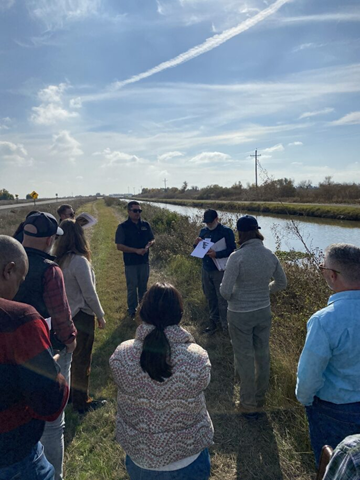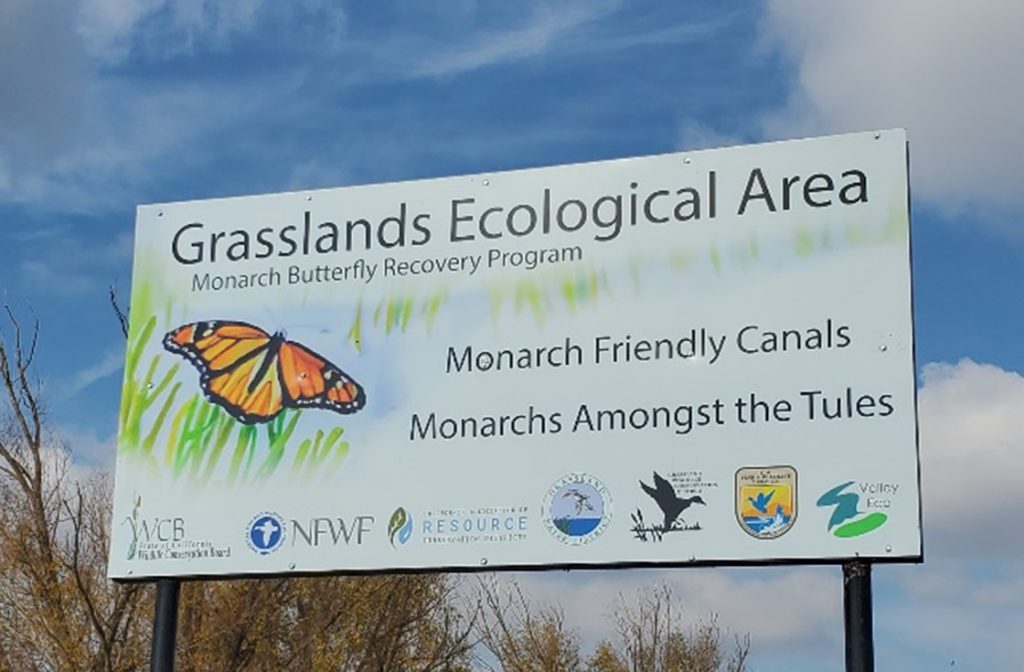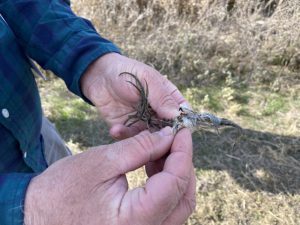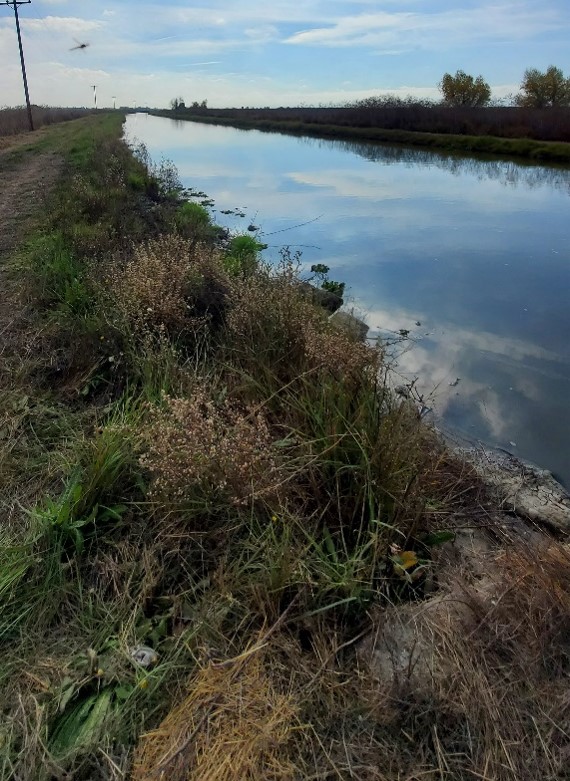By Patricia Bohls, CDFA Biodiversity Coordinator
Monarch butterflies and their host plant, milkweeds, have historically been prevalent throughout California. In recent decades the monarch population has significantly declined, and the population is now a fraction of its size compared to the 1980s.
In California, monarchs overwinter along the Pacific Coast. Large gatherings of monarchs can be seen at over-wintering sites such as the Pacific Grove Monarch Sanctuary. These monarch clusters are counted to help determine population size. After winter the monarchs head inland to spend the spring and summer breeding. The Central Valley is a critical part of their breeding range.

CDFA representatives including myself and deputy secretary Virginia Jameson recently participated in a tour of the Grassland Water District monarch butterfly habitat project in Merced County. Leaders from the Almond Alliance, the USDA Natural Resources Conservation Service, the U.S. Fish & Wildlife Service, the Wonderful Company, Xerces, the Great Valley Seed Company, and the National Fish and Wildlife Foundation (NFWF) also participated. Jonathan Birdsong, western regional director of NFWF, organized the tour, and Grasslands Water District (GWD) general manager Ric Ortega led it.
Grasslands is in the largest contiguous block of wetlands remaining in California’s Central Valley. The Western Monarch travels through the area on its migratory path, seeking out host plants for nectar and ovipositioning (egg-laying).
In 2021, the water district successfully established a monarch butterfly and pollinator habitat enhancement pilot project on the San Luis Canal, with a mix of perennial pollinator species, including narrow-leaf milkweed. The unlined canal bank is a prime location because the plants can thrive with very little supplemental irrigation.
The GWD is expanding this effort in the 2023-24 planting season with a grant from the National Fish and Wildlife Foundation and was able to leverage that grant to receive additional funding from the California Wildlife Conservation Board.
“The recent momentum and early success of the Monarch Recovery Program in and around the managed wetlands of the Grassland Ecological Area is a great example of collaboration between private landowners, native plant farms, and state and federal resource agencies,” said Ric Ortega.
The tour led to a thoughtful discussion of how to increase pollinator habitat in California’s San Joaquin Valley through interagency collaboration and incentives such as CDFA’s Pollinator Habitat Program.





